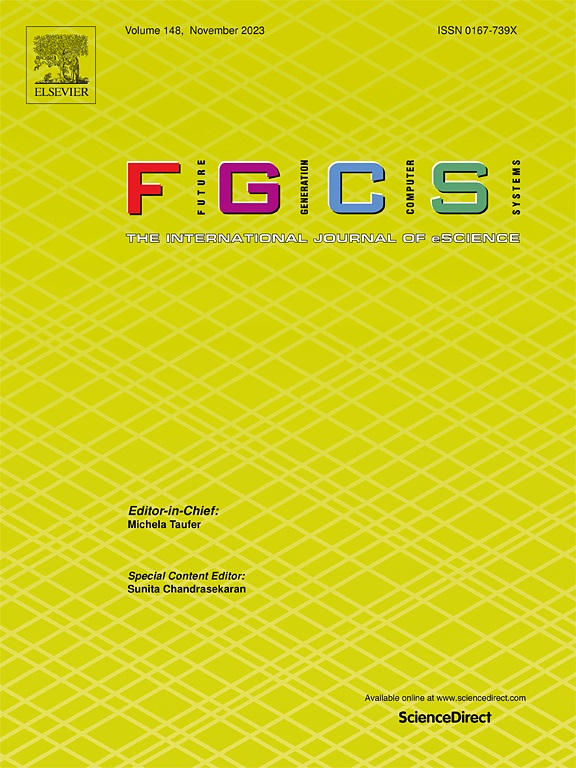探讨CP2K在CPU-GPDSP融合异构内高性能计算系统上的性能
IF 6.2
2区 计算机科学
Q1 COMPUTER SCIENCE, THEORY & METHODS
Future Generation Computer Systems-The International Journal of Escience
Pub Date : 2025-05-29
DOI:10.1016/j.future.2025.107912
引用次数: 0
摘要
本研究探讨了CP2K在集成CPU和GPDSP的异构HPC系统上的性能,旨在优化大规模分子模拟的计算效率。CP2K是一个开源软件包,设计用于模拟凝聚态系统,特别擅长处理复杂的量子化学和分子动力学工作负载。我们提出了CPU和GPDSP在异构处理器环境中的集成,详细介绍了关键的优化,包括密度泛函理论(DFT)中积分操作的矢量化和基于处理器内存架构的GEMM优化。此外,我们提出了一种适合硬件架构特征的并行计算策略,以最大限度地提高性能。使用CP2K测试套件的基准测试结果显示了显著的计算和并行效率提高。例如,在水分子模拟中,当扩展到256个计算节点时,系统可以实现79%的并行效率,使用大约400,000个核心。最后,我们对CPU-GPDSP和AVX-512矢量处理器的性能进行了比较分析,强调了GPDSP在异构HPC环境下加速的优势和潜在的局限性。本文章由计算机程序翻译,如有差异,请以英文原文为准。
Exploring the performance of CP2K simulations on the CPU-GPDSP Fusion intra-heterogeneous HPC system
This study explores the performance of CP2K on a heterogeneous HPC system integrating CPU and GPDSP, aiming to optimize computational efficiency for large-scale molecular simulations. CP2K is an open-source software package designed for simulating condensed matter systems, particularly excelling in handling complex quantum chemistry and molecular dynamics workloads. We present the integration of CPU and GPDSP in a heterogeneous processor environment, detailing key optimizations, including vectorization of integral operations in Density Functional Theory (DFT) and GEMM optimization based on processor memory architecture. Furthermore, we propose a parallel computing strategy tailored to the hardware’s architectural characteristics to maximize performance. Benchmarking results using the CP2K test suite demonstrate significant computational and parallel efficiency gains. For instance, in a water molecule simulation, the system achieves 79% parallel efficiency when scaled to 256 compute nodes, utilizing approximately 400,000 cores. Finally, we conduct a comparative performance analysis between CPU-GPDSP and AVX-512 vector processors, highlighting the advantages and potential limitations of GPDSP acceleration in heterogeneous HPC environments.
求助全文
通过发布文献求助,成功后即可免费获取论文全文。
去求助
来源期刊
CiteScore
19.90
自引率
2.70%
发文量
376
审稿时长
10.6 months
期刊介绍:
Computing infrastructures and systems are constantly evolving, resulting in increasingly complex and collaborative scientific applications. To cope with these advancements, there is a growing need for collaborative tools that can effectively map, control, and execute these applications.
Furthermore, with the explosion of Big Data, there is a requirement for innovative methods and infrastructures to collect, analyze, and derive meaningful insights from the vast amount of data generated. This necessitates the integration of computational and storage capabilities, databases, sensors, and human collaboration.
Future Generation Computer Systems aims to pioneer advancements in distributed systems, collaborative environments, high-performance computing, and Big Data analytics. It strives to stay at the forefront of developments in grids, clouds, and the Internet of Things (IoT) to effectively address the challenges posed by these wide-area, fully distributed sensing and computing systems.

 求助内容:
求助内容: 应助结果提醒方式:
应助结果提醒方式:


